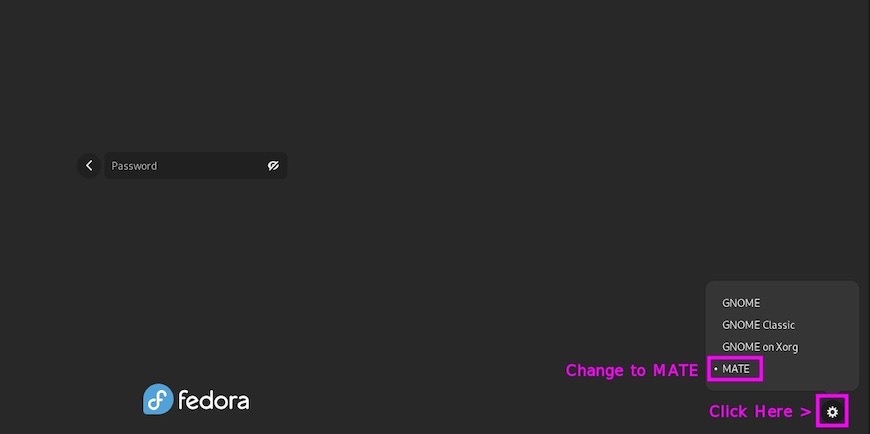How To Install MATE Desktop on Fedora 41

Fedora 41 offers a wide array of desktop environments, each catering to different user preferences and system requirements. Among these, MATE stands out as a lightweight yet fully functional desktop environment, revered for its classic interface and efficient resource utilization. This guide provides a detailed walkthrough on how to install MATE desktop on Fedora 41, ensuring a seamless transition and optimized user experience. Whether you’re a seasoned Linux enthusiast or new to Fedora, this article will equip you with the knowledge to set up MATE, customize it, and troubleshoot common issues. Let’s dive in!
Why Choose MATE Desktop for Fedora 41?
MATE is a desktop environment forked from the GNOME 2 codebase. It aims to provide a traditional desktop experience while keeping resource usage low. MATE is particularly appealing for users who prefer a stable, predictable interface without the overhead of more modern, resource-intensive environments like GNOME 47. It’s an excellent choice for older hardware or systems where performance is a priority.
Benefits of MATE
- Lightweight: MATE consumes fewer system resources, making it ideal for older computers or virtual machines.
- Traditional Interface: Users familiar with GNOME 2 will find MATE intuitive and easy to use.
- Customizable: MATE offers extensive customization options, allowing you to tailor the desktop to your specific needs.
- Stable: MATE is known for its stability and reliability, providing a consistent user experience.
System Requirements for MATE on Fedora 41
Before proceeding with the installation, ensure your system meets the necessary hardware and software requirements.
Hardware Requirements
- CPU: A processor with at least 1 GHz clock speed.
- RAM: Minimum 2 GB of RAM, though 4 GB is recommended for smoother performance.
- Storage: At least 20 GB of free disk space for the base installation.
Software Prerequisites
- Base Fedora 41 Installation: A working installation of Fedora 41.
- Internet Connection: Required for downloading packages from the Fedora repositories.
- Terminal Access: You’ll need terminal access to execute installation commands.
Pre-Installation Steps
Before installing MATE, it’s crucial to update your system and back up important data to prevent potential issues.
System Update
Updating your system ensures you have the latest package versions and security patches. Use the following commands to update your Fedora 41 installation:
sudo dnf updateThis command updates all installed packages to their latest versions.
Backup Considerations
Backing up your data is always a good practice before making significant system changes. This includes your personal files and system configurations.
- Important Data Backup: Copy your important documents, images, and other files to an external drive or cloud storage.
- System Configuration Backup: Create a backup of your system configuration files, such as
/etc/fstaband any custom scripts.
Installation Methods
There are two primary methods to install MATE on Fedora 41: using the DNF group install command or installing individual components manually.
Method 1: Using DNF Group Install
The simplest way to install MATE is by using the DNF group install command. This method installs MATE along with a set of commonly used applications.
- Open Terminal: Launch the terminal application.
- Install MATE Desktop: Execute the following command:
sudo dnf groupinstall mate-desktopThis command downloads and installs the core MATE desktop environment.
- Install MATE Applications: To install additional MATE-related tools and utilities, use the following command:
sudo dnf groupinstall mate-applicationsThis includes applications like Caja file manager, Pluma text editor, and Eye of MATE image viewer.
- Package Verification: During the installation, DNF will prompt you to confirm the package list and the disk space required. Type
yto proceed.
Method 2: Installing Individual Components
For a more customized installation, you can install MATE components individually. This method allows you to select specific packages and avoid installing unnecessary software.
- Open Terminal: Launch the terminal application.
- Install Core Components: Install the essential MATE packages using the following command:
sudo dnf install mate-desktop mate-panel caja pluma atrilThis command installs the core MATE desktop, panel, file manager, text editor, and document viewer.
- Install Additional Tools and Utilities: Install other MATE-related tools as needed:
sudo dnf install mate-terminal mate-system-monitor engrampa eomThis installs the MATE terminal, system monitor, archive manager, and image viewer.
- Customization Options: You can further customize your installation by selecting specific MATE applets, themes, and other utilities according to your preferences.
Post-Installation Configuration
After installing MATE, some configuration is necessary to ensure a smooth and personalized desktop experience.
Desktop Environment Setup
- Switching to MATE at Login: After the installation completes, reboot your system. At the login screen, select your username, and then click the gear icon to choose MATE as your desktop environment.
- Setting MATE as Default Desktop: To make MATE the default desktop, you may need to configure your display manager. The steps vary depending on the display manager you are using (e.g., GDM, LightDM).
- For GDM: GDM (GNOME Display Manager) usually remembers the last selected session. To ensure MATE is always selected, you may need to create a custom session file.
- For LightDM: LightDM can be configured to default to the MATE session by editing the
/etc/lightdm/lightdm.conffile.

System Integration
Integrating MATE with your system involves configuring themes, panels, and application integrations.
- Theme Configuration: MATE supports various themes that change the look and feel of your desktop. You can install new themes using the following command:
sudo dnf install mate-themesThen, use the MATE Tweak tool (mate-tweak) to select your preferred theme.
- Panel Customization: The MATE panel can be customized to add or remove applets, change the panel layout, and adjust panel properties. Right-click on the panel to access customization options.
- Application Integration: Ensure your applications are properly integrated with MATE by setting the appropriate desktop environment variables. This is usually handled automatically but may require manual configuration for some applications.
Troubleshooting Common Issues
While installing and configuring MATE, you might encounter some common issues. Here are some troubleshooting tips:
- Login Screen Issues: If you are unable to log in after installing MATE, ensure that the MATE session is correctly selected at the login screen. If the login screen loops, check your display manager configuration.
- Display Problems: If you experience display issues, such as screen flickering or resolution problems, ensure your graphics drivers are properly installed. You may need to install proprietary drivers for NVIDIA or AMD graphics cards.
- Package Conflicts Resolution: If you encounter package conflicts during installation, use the
dnf distro-synccommand to resolve them:
sudo dnf distro-syncThis command synchronizes your installed packages with the versions available in the repositorie.
Performance Optimization
To optimize the performance of MATE on Fedora 41, consider the following tips:
- Resource Usage Tips: Close unnecessary applications and processes to free up system resources. Use the MATE System Monitor to identify resource-intensive processes.
- Desktop Effects Management: Disable or reduce desktop effects to improve performance. This can be done via the MATE Tweak tool.
- System Responsiveness Improvements: Consider using a lightweight compositor like Compton for improved system responsiveness.
Congratulations! You have successfully installed MATE Desktop. Thanks for using this tutorial for installing the MATE Desktop environment on Fedora 41 system. For additional help or useful information, we recommend you check the official MATE Desktop website.